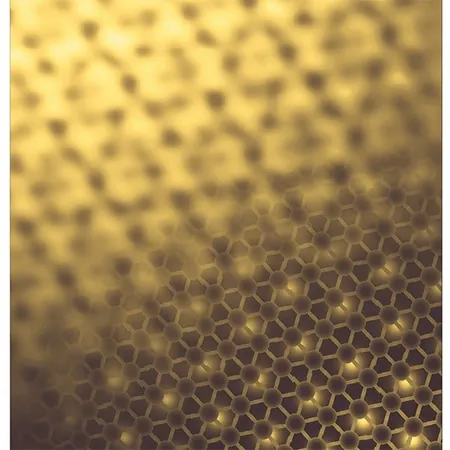
Revolutionary Breakthrough: Scientists Unveil Game-Changing 'Intercrystals'
2025-05-21
Author: Siti
Introducing Intercrystals: The Future of Electronics
A groundbreaking discovery by researchers at Rutgers University-New Brunswick has unveiled a new class of materials known as intercrystals, potentially set to transform the realm of electronics.
The Magic of Moiré Patterns
Intercrystals exhibit extraordinary electronic properties that may lead to advancements in efficient electronic components, quantum computing, and sustainable technologies. The scientists achieved this by stacking two incredibly thin layers of graphene—each just a single atom thick—twisted over a layer of hexagonal boron nitride. This slight misalignment created moiré patterns, similar to those seen with two overlapped mesh screens, drastically altering electron movement within the material.
A New Frontier in Material Design
Eva Andrei, a Board of Governors Professor in Physics and Astronomy, expressed her enthusiasm about this discovery, stating, "Intercrystals give us a new handle to control electronic behavior using geometry alone, without altering the material's chemical composition." This method can pave the way for revolutionizing technologies such as transistors and sensors by allowing for simpler design requirements.
Twistronics: The Technique Behind the Science
The innovation stems from an emerging field called 'twistronics,' where materials are twisted to form moiré patterns that significantly impact electron behavior—unlike anything found in traditional crystals. This field was sparked by prior research from Andrei’s team in 2009, which revealed how twisted graphene could reshape electronic structures.




 Brasil (PT)
Brasil (PT)
 Canada (EN)
Canada (EN)
 Chile (ES)
Chile (ES)
 Česko (CS)
Česko (CS)
 대한민국 (KO)
대한민국 (KO)
 España (ES)
España (ES)
 France (FR)
France (FR)
 Hong Kong (EN)
Hong Kong (EN)
 Italia (IT)
Italia (IT)
 日本 (JA)
日本 (JA)
 Magyarország (HU)
Magyarország (HU)
 Norge (NO)
Norge (NO)
 Polska (PL)
Polska (PL)
 Schweiz (DE)
Schweiz (DE)
 Singapore (EN)
Singapore (EN)
 Sverige (SV)
Sverige (SV)
 Suomi (FI)
Suomi (FI)
 Türkiye (TR)
Türkiye (TR)
 الإمارات العربية المتحدة (AR)
الإمارات العربية المتحدة (AR)